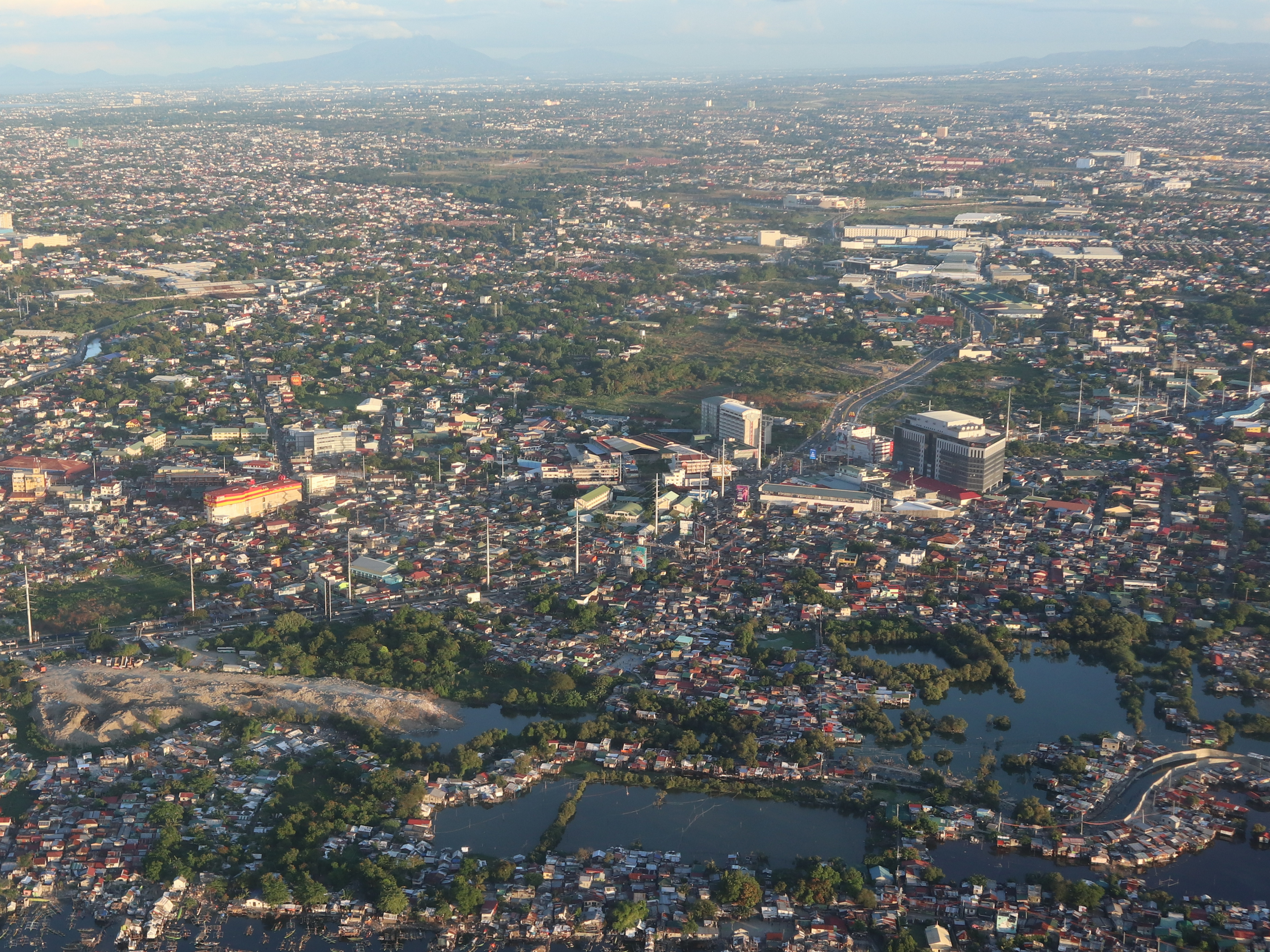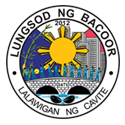The City of Bacoor has always been proud to be a major gateway to the province of Cavite for more than 350 years. Authored by Agustin de la Cavada and Mendez de Vigo in 1894, “Historia, Geografica, Geologica y Estadistica de Filipinas” noted that Bacoor was founded in 1671, during the reign of King Charles II of Spain. This was rooted in a petition coming from Bacoor’s principalia or noble class. It was reviewed until Bacoor was officially separated from the mother town of Cavite El Viejo (Kawit). The Ereccion del Pueblo de Bacoor decree was issued to Governor General Manuel de Leon at a time when Bacoor’s population numbered 10,165. Migration from Parañaque and nearby pueblos was believed to have started in 1669. Although Bacoor was never geographically part of Parañaque, our strong connection to it is not at all surprising as Cavite’s coastal towns were under its ecclesiastical jurisdiction until the late 16th century. The ecclesiastical jurisdiction for Bacoor was then transferred to Cavite Puerto and lasted until King Ferdinand VI of Spain issued a royal cedula forming Bacoor’s own curate in 1752.
Also known as Bacoor’s founding families, the principales bears the following last names: Cuenca, Gregorio, Pagtakhan, Garcia, Bayan, Castillo, Guevarra, de Castro, de la Rosa, Farolan, Garay, Ocampo, Paquingan, and Rodriguez. Also coming from the principalia class, Mateo Masacayan was Bacoor’s first gobernadorcillo. As such, they were responsible for shaping a mere suburb of Kawit into a new and independent pueblo in the province of Cavite.
17th century Bacooreños flourished on both fisheries and agriculture as their barangay names depict the livelihood endeavors of the residents. Fine examples of these barangays and sitios that exist up to this day are Zapote (chico), Sineguelasan (Spanish plum), Talaba (oyster), Alima (arimas fruit; alimasag), Salinas (salt beds), Daang Bukid (farm passage), Mambog (Leichhardt tree), Tabing Dagat (seaside), Niog (coconut), Banalo (portia tree), Panapaan (seafood hunting), Digman (waterthyme plant), Mabolo (velvet apple), Ligas (marking nut tree), Piñahan (pineapple field), and Molino (milling apparatus).
One of the earliest written mentions of Bacoor’s known old name can be found in “Relacion de las Yslas Filipinas” by an encomendero from Arevalo, Spain named Miguel de Loarca. Endorsed as a memoir, this was written by virtue of a royal decree, and can be traced within the fifth volume of the book, The Philippine Islands, 1493-1803, under the Documents of 1582.
De Loarca wrote:
“On the coast near Manila are Laguo (Ermita), Malahat (Malate), Longalo (Don Galo), Palañac (Parañaque), Vacol (Bacoor), Minacaya (Binakayan, Kawit), and Cavite (Cavite City). All these villages are within the borough of Cavite, and belong to his Majesty, to whom they pay tribute.”
Bacoor was written as Bacor in the Carta Hydrographica y Chorographica de las Yslas Filipinas by the Spanish Jesuit cartographer Pedro Murillo Velarde, Filipino engraver Nicolás de la Cruz Bagay, and Filipino artist Francisco Suárez. Published in Manila in 1734, it is commonly known as the Velarde map.
Bakod, the tagalog word for fence, and Bacood were also listed as traditional names of Bacoor. In the 1874 edition of Vade-Mecum Filipino: Manual de la Conversacion Familiar – Español/Tagalog by Venancio Maria de Abella, the native word Bacood is translated in spanish as Tierra Alta, meaning high ground.
Bacoor was also given the revolutionary name of Gargano just before it absorbed the initial blows of Spanish military power from Manila during the Cavite uprising of 1896. This name reflected the religious nature of the people of Bacoor, and loyalty to our patron saint, St. Michael, the Archangel. Gargano is a mountain located in Italy and houses Western Europe’s oldest shrine dedicated to St. Michael after his May 8, 492 apparition promising complete victory over pagan invaders. This revolutionary name was carried by Bacoor’s Katipunan leader, Gil Ignacio. He figured in a losing September 1896 battle to defend Bacoor and the Zapote River against Spanish war tactician General Ernesto de Aguirre. Even with Aguinaldo’s reinforcement of 500 volunteers, Aguirre’s men were able to ambush the group as their lifeless bodies were scattered along Bacoor’s Calle Real in the vicinity of present-day Barangay Kaingin. After 1897’s Lachambre offensive in Cavite, Ignacio joined Aguinaldo’s retreat to Biak-na-Bato in Bulacan, his exile to Hong Kong, and his return to the Philippines onboard the USS McCulloch. On 31 May 1898, the Philippine flag was hoisted at the church belfry after Gil Ignacio led the Bacooreños to victory that saw the surrender of an estimated 300 Spanish soldiers.
On July 15, 1898, Bacoor became the center of power of the country as it was the chosen cabecera or capital of the Revolutionary Government of the Philippines, led by the first president, Gen. Emilio Aguinaldo. The house of Don Juan Cuenca, located at the town’s poblacion, became Aguinaldo’s headquarters or his very own Malacañan. It was here where the revolutionary government sent and received various communication about souring Filipino-American relations, nominated and appointed cabinet positions, called for a general convention of town chiefs, enforced acts and decrees, and distributed to foreign powers the formally signed Solemn Declaration of Philippine Independence.
During the American occupation, the town status of Bacoor was dissolved by the new colonizers on October 15, 1903. It marked the american relegation of Bacoor from a town to a mere barrio-district of Imus as specified in the Philippine Commission Act No. 947. Two years later, Gen. Mariano Noriel and Peritaje Mercantil graduate Luis Landas headed the Bacoor Independence Committee. Their sole objective was to restore Bacoor’s status as a self-governing town. By the 24th of October 1906, they succeeded to separate Bacoor from Imus as enacted in the Philippine Commission Act No. 1551. This was followed by a municipal election that was held the following month. The Municipality of Bacoor chose its independence campaigner, Luis Landas, as the first to be called mayor in this new era of American colonization. He held office in 1907 and was re-elected twice, ending his third term in 1912.
During the Japanese occupation, Bacoor was known as the base of the 2nd Infantry Regiment of the Filipino-American guerilla forces. Headed by Col. Francisco Guerrero as commanding officer, Bacoor had 1,915 enlisted men and 96 officers that included Executive Officer Pedro Aragon, Lieutenant Colonel Teodoro R. Buhain; Batallion HQ Commander Patronicio R. Landas, Judge Advocate Service Dominador G. Lazaro, and Executive Staff Section’s S-1 Moises J. Buhain, S-2 Marcelo R. Landas, S-3 Clemente G. Guerrero, and S-4 Aurelio Ocampo.
In 2007, the centennial year of its separation from Imus thus regaining its self-governance, Bacoor experienced another reawakening. Known as Bagong Bacoor, Mayor Strike B. Revilla revolutionized public service by improving the general efficiency of the local government and by developing infrastructure needed by the barangays. He also activated the research and promotion of Bacoor’s products, tourism, culture, and history by initiating the Bakood Festival.
Another growth era for Bacoor was experienced a few years later. Due to the Municipality of Bacoor’s growing population and tax income, a cityhood bill was filed in the House of Representatives by Congresswoman Lani Mercado-Revilla, and in the Senate of the Philippines by Senator Ramon “Bong” Revilla, Jr. It was signed into law as Republic Act No. 10160. This act created the City of Bacoor and was ratified in a plebiscite on June 23, 2012.
Towards the end of that decade, another milestone was achieved as President Rodrigo Roa Duterte proclaimed the City of Bacoor as Marching Band Capital of the Philippines. Signed on the 6th of April 2020, this honor was given to the City of Bacoor, two years after it hosted the International Music Championships of 2018.
As we continue to Strike as One, Bacooreños remain to magnificently preserve our identity by protecting our truth, our history, and our culture.
The City of Bacoor – At Home Ka Dito!



